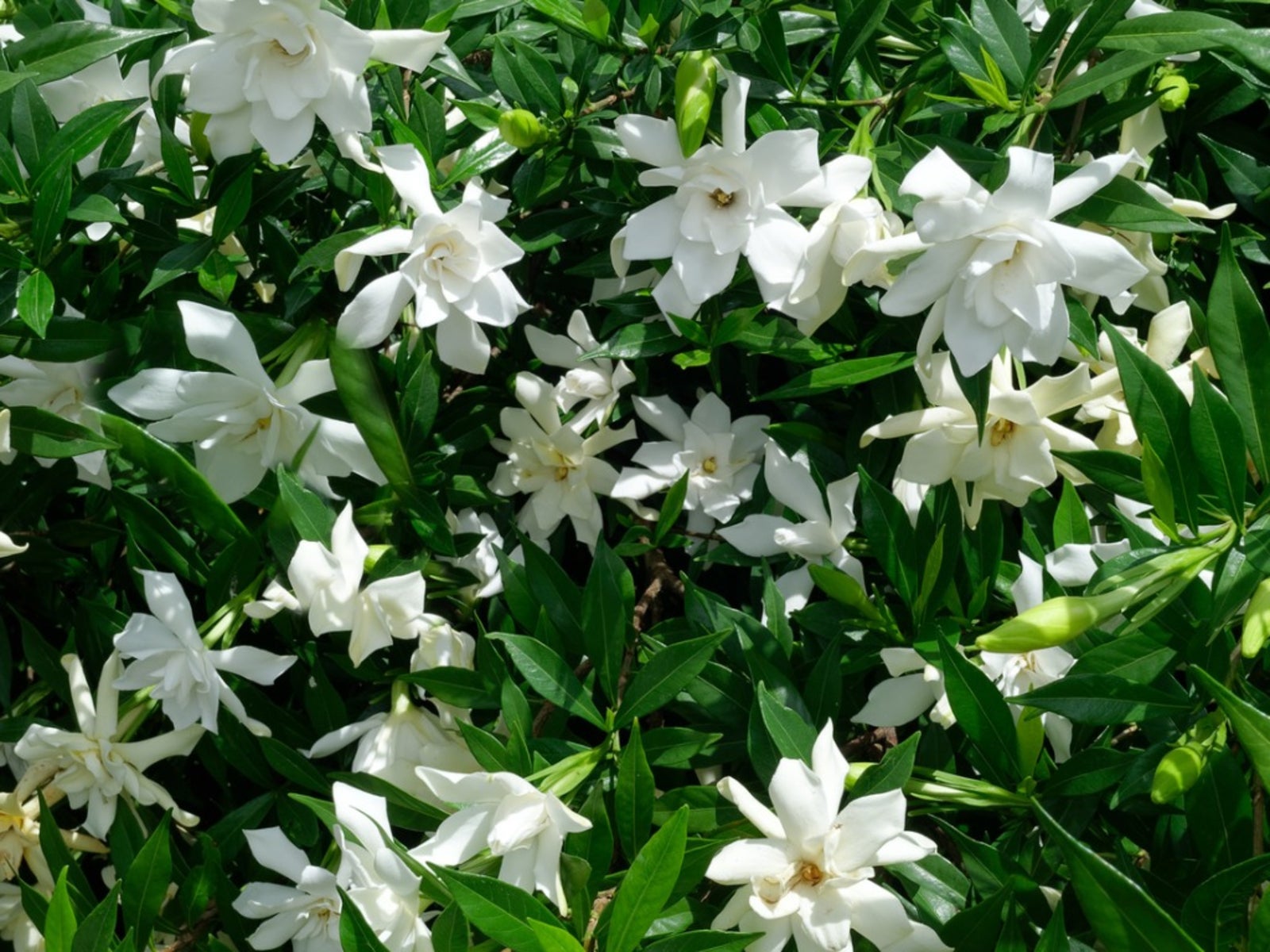Gardenia Cold Damage: How To Treat Cold Injury Of Gardenias


Gardenias are fairly hardy plants suitable for USDA zones 8 to 10. They can handle light freezes, but the foliage will get damaged with sustained cold in exposed locations. The extent of cold injury of gardenias is never certain until spring when new shoots and leaves appear. Sometimes the plant recovers and very little tissue is lost. Occasionally, a very hard hit gardenia will lose the battle if the root zone was deeply frozen and winter dryness was a factor. Frost damage on gardenia is a common complaint, but here are a few tips on how to diagnose and treat the problem.
Symptoms of Gardenia Cold Damage
It is hard to resist the shiny, lustrous leaves and starry scented flowers of a gardenia. Even when you know better, sometimes the intrepid gardener will purchase one even if they are living in a borderline zone. That said, gardenia planted in the appropriate hardiness zones may also experience surprise weather and winters of unusual ferocity. Gardenia cold damage occurs even when there is no snow on the ground. A combination of exposure, dryness, and frost causes the bulk of the damage. If your gardenia got too cold, initial symptoms will be brown or black leaves, and even the stem is sometimes affected. Sometimes the damage will not show up for several days, so it is important to check sensitive plants at a later date for frost damage on gardenia. In spring, damaged leaves will generally crumble and fall off, but woody tissue will need to be assessed. In exposed locations, it is probable a gardenia in cold weather will have some affected tissue but it may not be obvious until spring when budding and leaves fail to recur on stems.
Conditions that Affect Gardenia in Cold Weather
Winter can be drying to plants unless you live in a rainy area. Plants are more susceptible if the root zone is dry, which means giving the plant a deep drink prior to expected frost. Gardenias in exposed locations in full sun benefit from having their leaves sprinkled as the water freezes. This creates a protective cocoon over the tender tissue. Mulches are effective in protecting a gardenia in cold weather but should be pulled away from the base in spring. Plants that are exposed and have no other shielding plants or buildings are susceptible to cold injury of gardenias.
Treating Cold Injury of Gardenias
Whatever you do, don't start hacking off the dead growth in winter. This can cause more harm than good and it isn't apparent the tissue is fully dead at this time. Wait until spring for pruning and see if any of the stems come back to life and start to produce new shoots and buds. If the tissue doesn't revive by then, make clean pruning cuts to remove it back to green wood. Baby the plant that season with supplemental water and good fertilizing practices. Monitor it for the slightest pest or disease, which could fell the gardenia in its weakened state. In most cases, when a gardenia gets too cold, it will recover in spring or within a year or two if the damage is severe.
Gardening tips, videos, info and more delivered right to your inbox!
Sign up for the Gardening Know How newsletter today and receive a free copy of our e-book "How to Grow Delicious Tomatoes".

Bonnie Grant is a professional landscaper with a Certification in Urban Gardening. She has been gardening and writing for 15 years. A former professional chef, she has a passion for edible landscaping.
-
 Zinnias On Repeat: 10 Glorious Cut-And-Come-Again Varieties For Endless Summer Bouquets
Zinnias On Repeat: 10 Glorious Cut-And-Come-Again Varieties For Endless Summer BouquetsThese zinnia varieties keep giving all summer, making them the perfect choice for dedicated cutting gardens – or just the occasional homegrown bouquet.
By Ellen Wells
-
 Create A Romantic Garden Straight Out Of Bridgerton: Regency Era Romance In Your Garden
Create A Romantic Garden Straight Out Of Bridgerton: Regency Era Romance In Your GardenTry some romantic garden ideas straight out of Bridgerton. Flowers and gardens in the Regency era were lush and charming and you can get the same look!
By Bonnie L. Grant